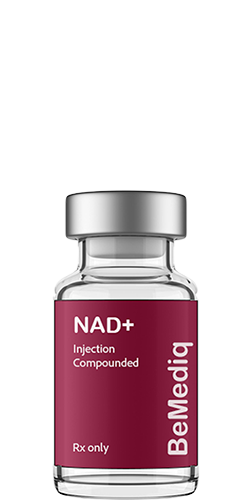Many symptoms blamed on hormones—fatigue, anxiety, irregular cycles—begin higher up, in the brain. Discover how stress, sleep, and rhythm shape women’s health.

Beyond the Ovaries: The Hidden Network Behind Hormonal Symptoms
When fatigue, mood swings, or sleepless nights begin to appear, most women are told the same story:
It’s your hormones.
The ovaries are slowing down, estrogen is dropping, and perimenopause has begun.
But what if that’s only part of the truth?
What if many of the changes we blame on menopause are not caused by aging ovaries — but by an overwhelmed brain, tired adrenals, and a thyroid that has quietly slowed its tempo?
Modern life asks a lot from women.
We wake too early, sleep too late, skip meals, live under artificial light, and carry stress that never truly ends.
The result?
The delicate network that connects brain, thyroid, adrenals, and ovaries begins to lose its rhythm.
The body still performs — but out of sync, as if the instruments of your inner orchestra were playing the right notes at the wrong time.
These early shifts —irregular cycles, anxiety, stubborn weight, restless sleep — may look like perimenopause, but often they begin much higher up: in the hypothalamus, the small region of the brain that keeps every gland in time.
And when the body’s internal clock — guided by the pineal gland and natural light — loses track of day and night, even that master rhythm begins to drift.
So before you blame your hormones, pause for a moment and ask yourself:
Could there be something deeper, something hidden, quietly shaping the way you feel — something you may not yet see, but still have the power to influence?
In this article, we’ll look deeper into the true architecture of the female endocrine system — how the brain, thyroid, adrenals, and ovaries communicate in real time, why their signals can fall out of sync, and how many “perimenopausal” symptoms — from hair thinning and cycle changes to fatigue and weight gain — are often messages from a body that has lost rhythm.
We’ll uncover the most common misconceptions, the subtle science behind them, and the simple ways to restore balance — through nourishment, rest, and renewed attention to your own rhythm.
The Brain’s Secret Link to Your Hormones
For decades, science imagined hormones as independent messengers — as if each gland were a little egoist, working on its own agenda.
But something didn’t add up.
Why could a single night of poor sleep alter hunger hormones?
Why did emotional stress stop menstruation?
Hidden deep within the brain, between the emotional and instinctive centers, lies a small yet powerful region — the hypothalamus. Barely the size of an almond, it acts as the translator between your inner world and your body’s chemistry, turning emotion, light, and thought into biological signals.
By the mid-20th century, researchers such as Geoffrey Harris and Roger Guillemin discovered that this tiny structure releases microscopic peptide messengers — releasing hormones — that instruct the pituitary gland, which in turn directs the endocrine glands below.
This discovery revealed that the brain and the hormonal system are not separate entities but one continuous network of feedback and communication — what modern science calls the hypothalamic–pituitary axis (HPA).
Here, the nervous system and endocrine system converge: emotional and sensory input becomes hormonal language, shaping everything from metabolism and reproduction to mood and immunity.
When this dialogue flows, we experience clarity, steadiness, and vitality.
When it falters — as it often does in midlife — we feel it as insomnia, anxiety, fatigue, or hormonal disarray.
The Body’s Inner Clock: How Lifestyle Shapes Your Hormones
We are sensory beings, wired to the rhythm of nature.
Every sunrise and every shift in light whispers a signal to your brain.
Deep within the brain lies the pineal gland, a small, light-sensitive organ that bridges the outer world and your inner rhythm.
If the hypothalamus is the conductor, the pineal is the timekeeper —translating the language of light into the chemistry of rest, repair, and renewal.
Guided by the hypothalamus, it releases melatonin, a hormone that not only invites sleep but also serves as one of the body’s most powerful endogenous antioxidants — far stronger than vitamins C or E in neutralizing free radicals, especially within the mitochondria.
When evening falls, the pineal whispers slow down — signaling every system to shift from activity to restoration.
But in modern life, that whisper is often drowned out.
Artificial light, emotional strain, and late-night stimulation blur the body’s sense of day and night.
And it isn’t just light — heavy evening meals, caffeine, alcohol, and sugar also confuse the internal clock.
Digestion, blood sugar spikes, and cortisol surges keep the body in “day mode,”suppressing melatonin just when it should rise.
When melatonin production falters, the body loses one of its key internal defenses against oxidative stress and inflammation.
That missing protection quietly accelerates cellular aging, mitochondrial fatigue, and hormonal dysregulation — the very changes many women begin to notice in their forties: slower recovery, duller skin, deeper fatigue, and less restorative sleep.
Over time, this misalignment leaves the brain and body out of sync: you lie awake at midnight yet feel foggy at dawn, reach for caffeine to start the day, and crave sweetness to keep it going.
The problem isn’t only hormonal imbalance — it’s hormonal mistiming, a loss of rhythm in a world that rarely rests.
When light, nourishment, and rest align, the pineal gland keeps time and the hypothalamus holds the rhythm — together, they orchestrate the entire hormonal symphony.
But when that timing slips, every other axis — from stress to metabolism to reproduction — begins to play out of tune.
And that’s where we turn next: to the three interconnected pathways that translate your brain’s rhythm into the language of your body. From the rush of cortisol to the whisper of thyroid hormones and the monthly pulse of estrogen and progesterone — each tells part of the story of your energy, mood, and vitality.
Inside the Brain Network: How Stress, Metabolism, and Cycles Intertwine
1. The Stress Connection — When Cortisol Takes the Lead (HPA Axis)
This axis forms the bridge between your brain and your adrenal glands — your protectors in times of stress.
In short bursts, cortisol sharpens focus and fuels survival.
But in modern life, the stress never ends.
Emails, deadlines, emotional tension, relationship dramas — the body interprets them all as danger.
Cortisol stays high, and the hypothalamus becomes numb to its own calming feedback — a state known as feedback fatigue.
That’s when symptoms begin:
- Restless sleep or waking at 3 a.m.
- Anxiety and irritability
- Sugar or caffeine cravings
- Midsection weight gain
- Irregular periods or low libido
You feel alert yet drained, wired yet exhausted. For women, this stress loop is the silent saboteur of hormonal harmony — depleting progesterone, dulling thyroid function, and disrupting reproductive rhythm.
After 40, stress resilience thins. Many women assume their symptoms come from low estrogen or progesterone, yet the first imbalance often begins higher up — in the HPA axis.
Insight:
If the stress system is overactivated, the reproductive and thyroid systems can’t keep rhythm.
The body isn’t failing; it’s protecting.
Key Takeaway:
- The hypothalamus can’t restore balance when flooded with cortisol.
- Caring for your nervous system — with rest, boundaries, and gentle recovery — supports the natural balance your hormones depend on.
2. The Metabolism Connection — When the Thyroid Slows Down (HPT Axis)
The HPT axis connects the hypothalamus to your thyroid — the gland that sets the body’s metabolic tempo.
It decides how energized you feel, how radiant your skin and hair look, how efficiently your body burns fuel — and even influences fertility and menstrual regularity.
The thyroid doesn’t act on its own. It depends on a precise chain of communication from the brain:
the hypothalamus releases TRH (thyrotropin-releasing hormone), which prompts the pituitary to secrete TSH, signaling the thyroid to produce its key hormones — T4 and T3.
In short: Hypothalamus → TRH → Pituitary → TSH → Thyroid → T4 & T3.
This dialogue onlyflows when the hypothalamus feels safe. If it senses ongoing stress, inflammation, or caloric restriction — especially when energy intake or leptin signals are too low — it slows the signal.
By lowering TRH, the brain conserves fuel, as if protecting you from famine.
When TRH drops, the thyroid produces less T4 and T3, and the body’s tempo slows. Under stress or low energy, the conversion of T4 to active T3 also declines, while more reverse T3 is made — another way the body hits the brakes. That’s why, during burnout, overtraining, or restrictive dieting, you may notice:
- Cold hands and feet
- Thinning hair
- Slower digestion
- Stubborn weight gain, even while eating less
The hypothalamus isn’t broken — it’s protecting you. It believes you must preserve energy to survive.
When Survival Mode Silences Your Metabolism
Here’s where many women fall into a silent trap. When they notice their body changing — a few extra pounds, a softer belly — they often react with panic and restriction.
Calories drop below 1,200, sometimes even 1,000 per day. Carbohydrates disappear; fats are feared.
But the body doesn’t interpret this as discipline — it interprets it as danger.
The result? The hypothalamus tightens the brakes even more. Metabolism slows further, cortisol rises, and the thyroid falls even quieter.
The harder you try to control, the more your body resists.
Insight for Women After 40
In your forties, as perimenopause begins, this feedback becomes even more sensitive.
What feels like “hormone chaos” may simply be the brain protecting you from perceived scarcity.
If your hypothalamus doesn’t feel safe, it won’t let the thyroid accelerate.
Before blaming your hormones, check your fuel:
- A balanced intake, typically around 1,600 kcal/day or higher depending on activity level,
- rich in complex carbohydrates (not sugar!),
- adequate protein (65–80 g/day), and
- healthy fats (especially omega-3s), signals abundance, not deprivation.
Your body doesn’t need punishment; it needs permission — to eat, rest, and recover.
In short: Safety → TRH → TSH → T4/T3 → Energy → Glow.
Key Takeaway:
True thyroid balance begins by convincing the hypothalamus you are safe — well-fed, well-rested, and not at war with yourself.
When the brain senses abundance instead of danger, the thyroid — and your glow— awaken again.
3. The Reproductive Connection — When Hormones Fall Out of Rhythm (HPO Axis)
If one axis defines the feminine rhythm, it’s this one — connecting the hypothalamus, pituitary, and ovaries.
It’s why you feel magnetic one week and introspective the next.
It’s the pulse behind your monthly rhythm — the unseen dance that moves mood,desire, and the transitions of womanhood. So if you suddenly face headaches, hot flashes, or mood changes, look to your HPO axis — the ongoing dialogue between your brain and your ovaries.
It works like a conversation: The hypothalamus — your brain’s “conductor” — releases a signalcalled GnRH. The pituitary gland, acting as a translator, turns that into two messages: FSH and LH. These reach the ovaries, prompting them to produce estrogen and progesterone — which then send their reply back to the hypothalamus.
In short: Hypothalamus→ GnRH → Pituitary → FSH & LH → Ovaries → Estrogen & Progesterone →back to Hypothalamus.
The hypothalamus doesn’t just command — it communicates. Like every intelligent system, it listens and responds.
When progesterone rises after ovulation, it tells the brain, “all is well.” The rhythm slows, sleep deepens.
But when progesterone declines — through stress, undernourishment, or perimenopause — that calming signal weakens. The brain becomes uncertain, the rhythm turns irregular; cycles shorten or vanish.
And when stress lingers, the hypothalamus may temporarily suppress ovulation — not as failure, but as protection.
You cannot conceive or menstruate if your brain believes you’re in danger.
Sometimes, this pause happens long before perimenopause. In your thirties, if your period fades after extreme dieting, overexercising, or emotional exhaustion, it might not be menopause at all — it could be hypothalamic amenorrhea.
In this state, the brain withholds reproductive hormones to conserve energy for survival.
The solution isn’t found in forcing hormones, but in rebuilding safety —through nourishment, rest, and gentleness with your body.
After forty, as ovarian feedback becomes unpredictable — sometimes too strong, sometimes too faint — the hypothalamus works even harder, experimenting and recalibrating. Now, imagine this delicate system already under strain: flooded with signals of danger from late nights, skipped meals, poor nutrition, alcohol, or chronic stress. The brain’s “conductor” is already working overtime, trying to maintain balance. And just when it’s stretched thin, the ovaries — its long-time dance partners — begin to change their rhythm, sometimes whispering, sometimes silent. It’s no wonder that symptoms appear so suddenly: the body isn’t breaking; it’s trying desperately to restore harmony amidst the noise.
That’s why perimenopause can feel chaotic — not because your body is failing, but because it’s rebalancing.
When you understand this, everything changes.
Hot flashes, sleeplessness, or mood shifts aren’t random — they’re messages from a brain working to synchronize its rhythm with a changing body.
Key Takeaway:
Restoring hormonal harmony doesn’t begin by pushing the body harder — through aggressive fertility stimulation, excessive hormone replacement, or the pressure to “fix” what feels broken.
It begins by calming the hypothalamus — the quiet bridge between your innerworld and your hormones.
When the brain feels safe, the body remembers its rhythm — softer, wiser, and beautifully alive.
The Hidden Network That Connects Stress, Metabolism, and Cycles
Every hormonal axisis part of the same ecosystem — a living web of communication that adapts with every thought, meal, and emotion. When one current slows, another compensates, keeping life flowing beneath the surface.
Excess cortisol(HPA) suppresses TSH and GnRH.
When cortisol runs high for too long, the stress axis (HPA) suppresses thyroid and ovarian communication. The brain begins to whisper instead of sing. Energy fades, cycles grow irregular, and even simple tasks feel heavier than they should. You might feel wired but weary — restless at night, yet sluggish by morning.
Low thyroid function (HPT) slows ovarian hormone clearance.
When the thyroid slows (HPT), the entire tempo of the body softens. Estrogen lingers longer in the system, and its effects — fluid retention, breast tenderness, and mood changes — seem to stretch beyond their season.
Skin loses some of its glow, hair feels thinner, digestion slows, and the body holds on to warmth and weight as if conserving energy for winter.
Even your thoughts move differently — steady, but less sparkly — as if everything inside you were moving just a little more slowly than before.
Estrogen fluctuations (HPO) alter cortisol sensitivity.
And when estrogen itself begins to fluctuate (HPO), the stress response heightens. The smallest worry can echo like thunder, sleep becomes fragile, and recovery from effort or emotion takes longer than before.
Hormonal balance depends on a subtle dialogue led by three centers in the brain — the pineal gland, the hypothalamus, and the pituitary — working together to keep time, translate signals, and guide every gland below.
The pineal senses light and darkness, setting the tempo for rest and renewal. The hypothalamus reads emotion and environment, adjusting the body’s innertone. And the pituitary translates those neural melodies into hormonal messages that reach the thyroid, adrenals, and ovaries.
But the timekeeper, conductor, and translator don’t move together on their own — they respond to how you live.
They find rhythm when you make rhythm: when evenings are dim and screen-light fades, when mornings begin with real daylight, when meals are regular and nourishing, when rest is honored, and when stress isn’t worn as a badge of strength.
They listen when you slow down enough to listen, too.
That’s when the orchestra below — thyroid, adrenals, and ovaries — begins to tune itself again.
Energy steadies, mood softens, warmth returns.
And in that rhythm, your body remembers balance — not imposed from the outside, but created from within.
When you nourish the hypothalamus itself — with rest, rhythm, and nourishment — the body begins to recalibrate on its own.
Energy steadies. Sleep deepens. Cycles find their natural timing again.
When the body finds its rhythm, it doesn’t need to be pushed — only supported.
Part 2 explores the quiet rituals that help your brain feel safe again — the small, everyday acts that tell the hypothalamus, “you are safe.”
Key Takeaways
- Your hormones don’t work in isolation. The thyroid, adrenals, and ovaries all follow signals from the brain — primarily from the hypothalamus and pineal gland.
- The hypothalamus is your hormonal conductor. It interprets stress, sleep, light, and emotion, converting them into chemical instructions for every gland below.
- The pineal gland sets the rhythm. Its melatonin output guides sleep, recovery, mitochondrial repair, and antioxidant protection.
- Melatonin is more than a sleep hormone. It’s one of the body’s most potent antioxidants, protecting cells from oxidative stress and slowing biological aging.
- Modern life disrupts rhythm. Artificial light, late nights, caffeine, alcohol, sugar, and irregular meals confuse the brain’s internal clock — leading to hormonal mistiming, fatigue, and restless sleep.
- Hormonal balance begins with safety and rhythm. When the brain feels safe — well-fed, rested, and in sync with natural light — every gland can recalibrate.
FAQs: Understanding the Brain–Hormone Connection
1. What is the hypothalamus, and why does it matter for women’s health?
The hypothalamus is a small region in the brain that links your emotions, nervous system, and hormones. It regulates hunger, temperature, sleep, reproduction, and stress responses by signaling to the pituitary and endocrine glands. When it’s dysregulated, symptoms like fatigue, weight changes, and mood shifts appear.
2. How do stress and cortisol affect my hormones?
Chronic stress overstimulates the HPA axis, raising cortisol. Over time, this blunts the brain’s sensitivity to feedback signals, lowering thyroid and reproductive hormone activity — a condition sometimes called “feedback fatigue.”
3. Can eating too little affect my thyroid or period?
Yes. Severe calorie restriction or low-carb diets can suppress hypothalamic releasing hormones (TRHand GnRH), especially when carbohydrate intake remains chronically low, reducing thyroid and ovarian function. The brain interprets low energy intake as famine and shifts into “energy-saving mode.”
4. What’s the difference between perimenopause and hypothalamic amenorrhea?
Perimenopause is a natural midlife transition where ovarian feedback becomes inconsistent. Hypothalamic amenorrhea can occur at any age — often in women under stress, undereating, or overexercising — when the brain suppresses reproductive hormones to conserve energy.
5. How can I support my hypothalamus and pineal gland naturally?
Keep regular rhythms: consistent meal times, daylight exposure in the morning, reduced blue light in the evening, enough calories (especially complex carbs and healthy fats), and quality sleep. These simple patterns tell your brain: you are safe.
6. How do I know if my hypothalamus might be “out of rhythm”?
Common signs include waking at 3 a.m., irregular periods, fatigue despite rest, temperature sensitivity, anxiety, or constant hunger. If labs appear “normal” but you feel off, it’s often a regulatory, not a hormonal, issue.
7. Why do symptoms like fatigue or irregular cycles appear before menopause?
These changes often start higher up — in the hypothalamus or HPA axis — long before estrogen or progesterone decline. Chronic stress, undernourishment, or sleep disruption can mimic perimenopausal symptoms.
8. Can late-night eating or alcohol really affect hormones?
Yes. Heavy meals, alcohol, or sugar before bed suppress melatonin and elevate cortisol, confusing the body’s natural night–day rhythm and contributing to sleep disturbance and hormonal imbalance.
9. How can I begin to balance my rhythm naturally?
Start with regular meals, natural light exposure, digital sunset (dim lightafter 9 p.m.), and a diet rich in complex carbs, protein, and omega-3 fats. These cues tell your brain that it’s safe — allowing the hypothalamus to recalibrate.
Disclaimer: These statements are for informational purposes only and have not been evaluated by the Food and Drug Administration. This content is not intended to diagnose,treat, cure, or prevent any disease. Always consult a licensed healthcare provider before starting any supplement or therapy.

Written by Elena B.,Women's Wellness Coach
About the Author: Elena B. is an Integrative Health Educator (non-clinical) with a background in holistic health, hormonal resilience, and longevity science. Her mission is to help women reconnect with their biology, understand their cycles, and make empowered lifestyle choices - without medical claims or therapeutic prescriptions.
References
- Harris, G. W. (1955). Neural Control of the Pituitary Gland. London: Edward Arnold.
- Guillemin, R., & Schally, A. V. (1977). The discovery of hypothalamic releasing hormones. Nobel Lecture in Physiology or Medicine.
- McEwen, B. S. (2007). Physiology and neurobiology of stress and adaptation: central role of the brain. PhysiolRev,87(3), 873–904. [PMID: 17615391]
- Chrousos, G. P. (2009). Stress and disorders of the stress system. Nat Rev Endocrinol, 5(7), 374–381. [PMID: 19488073]
- Kalra, S. P. (1993). Neuroendocrine control of reproduction: integration of neural and hormonal signals. EndocrRev, 14(6), 694–707. [PMID: 8283247]
- Kauffman, A. S., & Clifton, D. K. (2005).Hypothalamic releasing factors and neuroendocrine feedback. EndocrRev,26(5), 531–569. [PMID: 16129662]
- Kalsbeek, A., et al. (2011). Circadian control of the endocrine system. J Clin Endocrinol Metab,96(4), 913–922. [PMID: 21346063]
- Arendt,J. (2022). Physiology of the Pineal Gland and Melatonin. In: StatPearls. Treasure Island (FL): StatPearls Publishing. [NCBI Bookshelf ID: NBK549863]
- Guillemin, R. (2011). Neuroendocrinology: a short historical review. Ann N Y Acad Sci,1220(1), 1–5. [DOI: 10.1111/j.1749-6632.2011.05991.x]
- Fliers, E., Klieverik, L. P., & Kalsbeek, A. (2010). Novel neural pathways for metabolic effects of thyroid hormone. Trends Endocrinol Metab,21(4), 230–236. [PMID: 20167468]
- Warner, A., & Mittag, J. (2012). Regulation of the hypothalamic–pituitary–thyroid axis in energy balance. JEndocrinol, 213(1), 1–14. [PMID: 22355003]
- Boelen, A., et al. (2004). Non-thyroidal illness syndrome: the role of cytokines and fasting. J Endocrinol,180(3), 291–299. [PMID: 15012588]
- Lechan, R. M., & Fekete, C. (2006). Role of melanocortin signaling in TRH regulation. Front Neuroendocrinol, 27(3), 273–283. [PMID: 17049896]
- Berga, S. L., et al. (1989). Hypothalamic amenorrhea and stress-related GnRH suppression. JClin Endocrinol Metab, 68(2), 301–308. [PMID: 2493025]
- Hardeland,R., et al. (2023). Melatonin andbiological rhythms: from bench to bedside. Front Neurosci, 17,1129458. [DOI: 10.3389/fnins.2023.1129458]



























